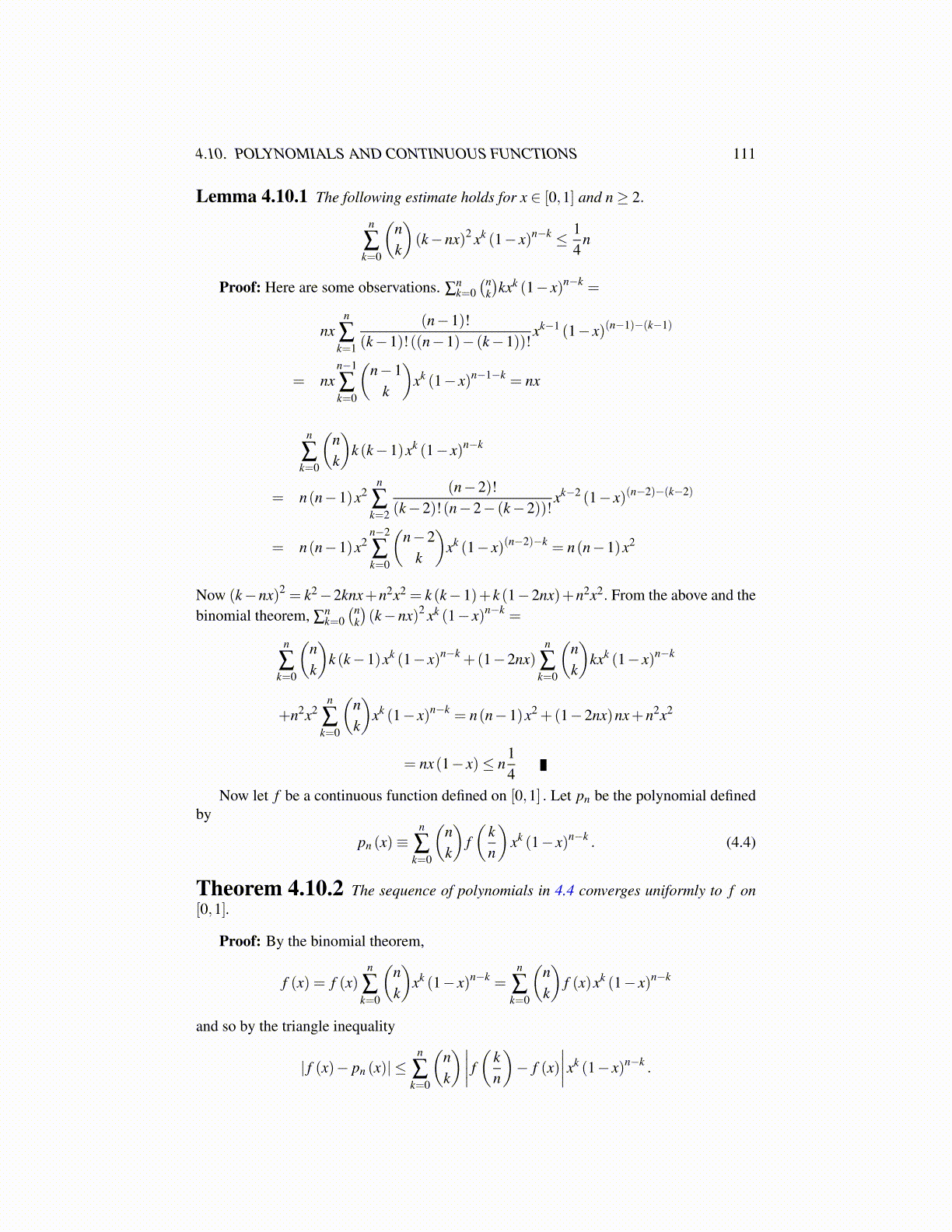
4.10. POLYNOMIALS AND CONTINUOUS FUNCTIONS 111
Lemma 4.10.1 The following estimate holds for x ∈ [0,1] and n ≥ 2.
n
∑k=0
(nk
)(k−nx)2 xk (1− x)n−k ≤ 1
4n
Proof: Here are some observations. ∑nk=0(n
k
)kxk (1− x)n−k =
nxn
∑k=1
(n−1)!(k−1)!((n−1)− (k−1))!
xk−1 (1− x)(n−1)−(k−1)
= nxn−1
∑k=0
(n−1
k
)xk (1− x)n−1−k = nx
n
∑k=0
(nk
)k (k−1)xk (1− x)n−k
= n(n−1)x2n
∑k=2
(n−2)!(k−2)!(n−2− (k−2))!
xk−2 (1− x)(n−2)−(k−2)
= n(n−1)x2n−2
∑k=0
(n−2
k
)xk (1− x)(n−2)−k = n(n−1)x2
Now (k−nx)2 = k2−2knx+n2x2 = k (k−1)+k (1−2nx)+n2x2. From the above and thebinomial theorem, ∑
nk=0(n
k
)(k−nx)2 xk (1− x)n−k =
n
∑k=0
(nk
)k (k−1)xk (1− x)n−k +(1−2nx)
n
∑k=0
(nk
)kxk (1− x)n−k
+n2x2n
∑k=0
(nk
)xk (1− x)n−k = n(n−1)x2 +(1−2nx)nx+n2x2
= nx(1− x)≤ n14
Now let f be a continuous function defined on [0,1] . Let pn be the polynomial definedby
pn (x)≡n
∑k=0
(nk
)f(
kn
)xk (1− x)n−k . (4.4)
Theorem 4.10.2 The sequence of polynomials in 4.4 converges uniformly to f on[0,1].
Proof: By the binomial theorem,
f (x) = f (x)n
∑k=0
(nk
)xk (1− x)n−k =
n
∑k=0
(nk
)f (x)xk (1− x)n−k
and so by the triangle inequality
| f (x)− pn (x)| ≤n
∑k=0
(nk
)∣∣∣∣ f ( kn
)− f (x)
∣∣∣∣xk (1− x)n−k .